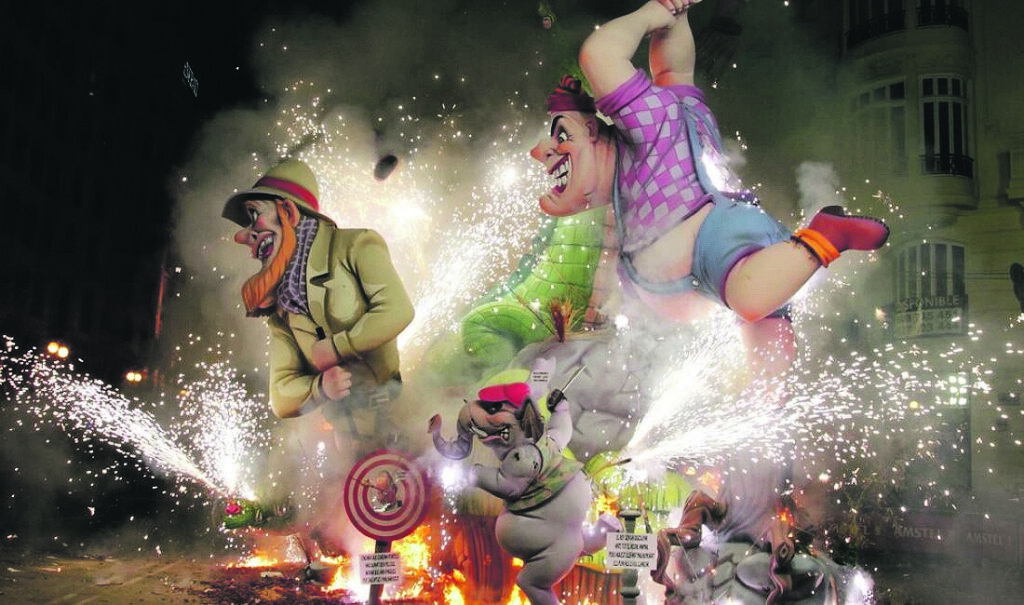
ADVERTISEMENT

The history of the Fallas dates back to the 18th century. Carpenters in Valencia used to organise the Fallas on the eve of the 19 March, the feast day of their patron saint San José, They began to burn their wooden frames (parots), which they had used for their oil lamps in winter. Over time, they began to cover them with old fabrics and straw, giving them faces and eventually creating cartoonish scenes - the birth of today's fallas.
Today these monumental sculptures made of papier-mâché, wood and polystyrene are true masterpieces of satire that address political, social or humorous topics. They can be up to 30 metres high and are painstakingly handcrafted by artists over a period of months.
A central component of the festival are the Falleras Mayores, the representatives of each Fallas association (Casal Faller). Every year a „Fallera Mayor de Valencia“ who act as official ambassadors for the festival. Wearing traditional dresses embroidered with silk and elaborate hairstyles with gold combs, they take part in numerous ceremonies and parades. The election of this representative is a great honour and is awaited with great anticipation.
The Fallas officially begin on 1 March with the daily „Mascletàs“ on the town hall square. These explosive firework displays are an impressive tradition that is less about colour and more about the thunderous rhythm of the explosions.
The highlight of the festivities begins on 15 March with the „La Plantà“, when all the sculptures are erected in the city. On 17 and 18 March follows the „Ofrenda de Flores“, an impressive floral offering to the patron saint Virgen de los Desamparados, where thousands of falleras parade through the city carrying flowers.
The nights are characterised by breathtaking fireworks, including the famous „Nit del Foc“ on 18 March, which is considered the most spectacular fireworks show in Valencia.
The festival finally culminates in the „Cremà“ on 19 March, when all the fallas go up in flames in a single night - an unforgettable spectacle of light and fire. Only the winning falla is saved from destruction and sent to the Fallas Museum transferred.
It's not just Valencia that celebrates this festival - the whole region and towns along the Costa Blanca also have their own Fallas traditions:
Valencia
18 March:
19 March:
Dénia
Calpe
Alicante
Although Alicante is known for the „Hogueras de San Juan“ in June, events are also held during the Fallas period. On 27 March, ONCE is organising a guide dog demonstration to raise awareness of visual impairment.
Please note that the exact dates and events may vary depending on the city. It is recommended to consult the local tourist offices or official websites of the respective cities for up-to-date information.